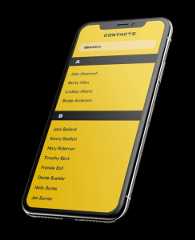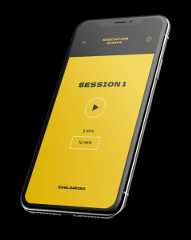Dark Patterns
Tip Line
Dark Patterns Tip Line
Every day, we’re exploited for profit throughdark patterns: design tactics used in websites and apps to persuade you into doing things you probably would not do otherwise.
We need to take a stand against dark patterns—and you can help byreporting a dark pattern today. It will help us fight back against companies using manipulative dark patterns to take our private information, money, and time. You deserve respect, online and off.
Report a PatternDARK PATTERNS ARE EVERYWHERE
Dark patterns are common in websites and apps we use everyday, but they’re sometimes hard to spot because they’re designed to deceive us. Through secretly obtaining personal information and making us do things we don’t want to do, dark patterns can create inconveniences or even serious harms.
- Social Media
- Smart Devices
- Financial & Insurance
- Health & Wellness
- Education

Social Media
Social networks, media sharing networks, discussion forums, content curation platforms, blogging and publishing networks
Example
In order to use a social media app, the company forces you to connect your social networks to your phone number before you are able to use the service; or the choice to sign up using email is made less prominent or hard to find.

Smart Devices
Smart doorbells, speakers, thermostats, medical sensors, connected security systems
Example
A smart watch asks you, “Do you want to sign up for daily sleep reminders?” and the no option is very small / hidden.

Financial & Insurance
Credit score apps, auto insurance online quote processes, online tax services
Example
Essential services collect personal and payment information for a “free trial” and then automatically bill users for a paid service without a reminder that the free trial is ending and payment will begin.

Health & Wellness
Contact tracing, mental health apps, fitness apps and tracking devices
Example
Companies may share a person’s mental health app data (including details on their anxiety and depression) to research institutions by default — without explicitly asking the user for permission to do so.

Education
Online learning platforms, children’s games with social media components, videoconferencing systems for educational purposes
Example
An online social learning platform for kids that shares their personal profile details (including full name, age, and location) to other learners on the platform by default.
Report a
Dark Pattern
Notice a website or app up to something suspicious? Maybe you’ve felt forced into giving up personal details or discovered hidden fees. Document and share your experience to help prevent other people from also being harmed. Sharing a dark pattern you spotted in the wild helps us learn more about interfaces and designs that impact real people. Your tips will help policymakers and enforcers hold companies accountable for their dishonest and harmful practices, and we may feature your submission on this site.
Important note: The Dark Patterns Tip Line does not provide legal help. Reporting a dark pattern here helps raise public awareness and contributes to a list of examples for policymakers, enforcers and researchers. If you find a dark pattern that you believe violates the law, you can file a complaint with your state Attorney General (AG) who enforces consumer protection statutes against unfair, misleading, and deceptive acts and practices.
Report here
Our Purpose
The Dark Patterns Tip Line is a platform people can use to submit manipulative designs they encounter in everyday digital products and services. Through crowdsourcing human stories of digital manipulation and amplifying people’s voices, we will raise awareness of the real-life harms that result from manipulative design.
The submissions reflect the views of the people who submitted them, and not necessarily those of the Stanford Digital Civil Society Lab.
About UsEngage
Engage and encourage people to submit their stories of dark patterns online.
Inform
Inform the public on how to avoid devious design tactics they may encounter in everyday use of online products and services.
Empower
Empower policymakers and advocates with evidence that illustrates real-life harms of deception online.
Change
Change the status quo by advocating for stronger consumer protections and holding companies accountable.